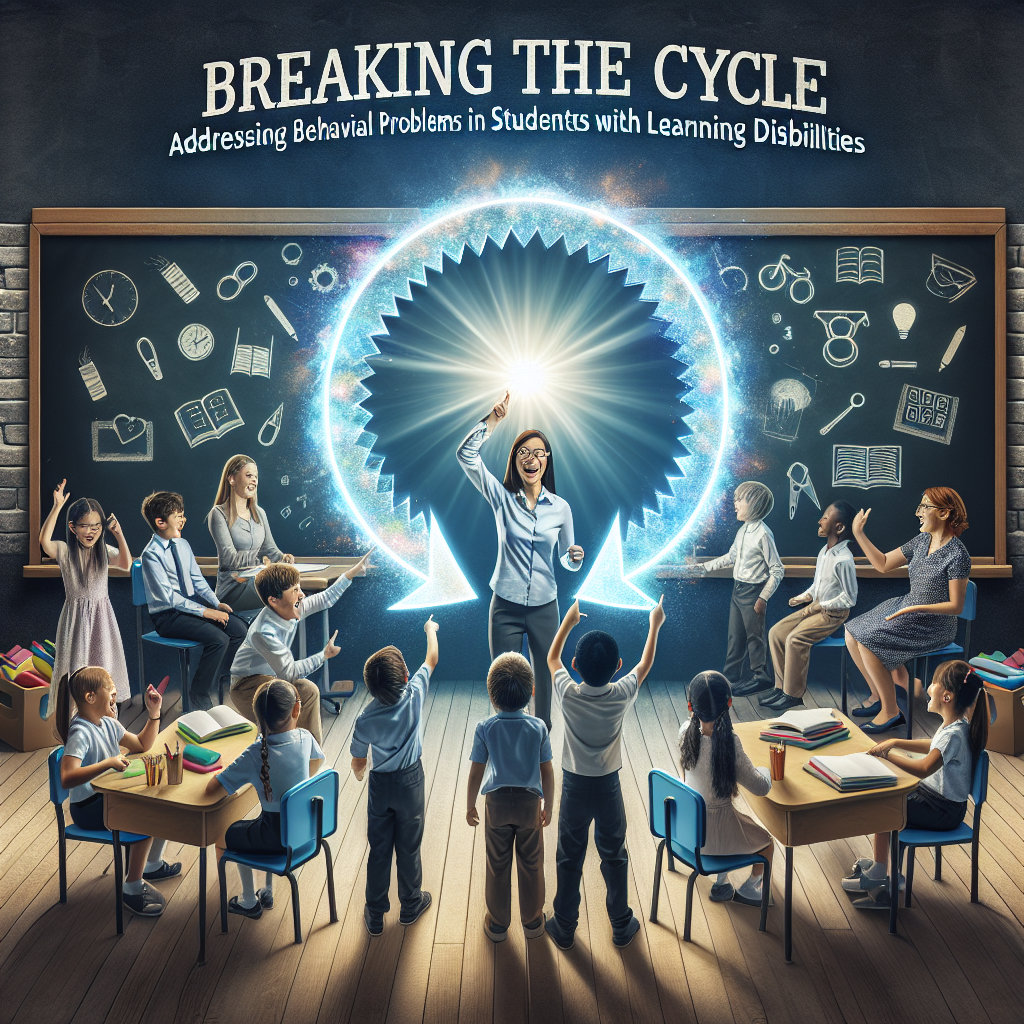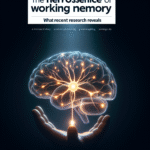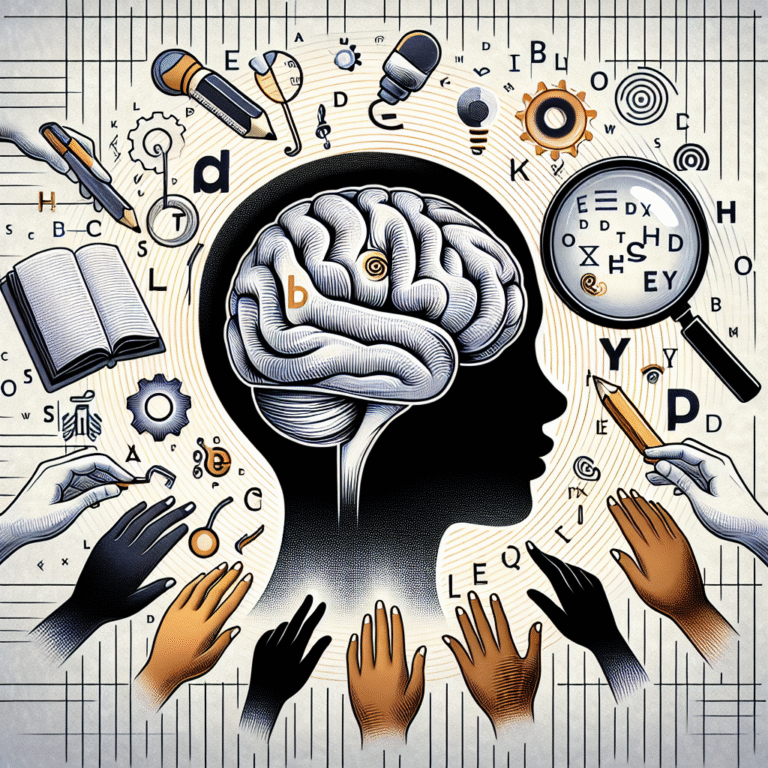
Breaking the Cycle: Addressing Behavioral Problems in Students with Learning Disabilities – The Essential Guide
Introduction
In today’s educational landscape, understanding and addressing behavioral problems in students with learning disabilities is critical for fostering an inclusive environment conducive to learning and personal growth. Breaking the Cycle: Addressing Behavioral Problems in Students with Learning Disabilities is not just a phrase; it’s a call to action that emphasizes the necessity of tailored interventions and support strategies. Every child deserves the opportunity to thrive academically and socially, but for many, the dual challenges of learning disabilities and behavioral issues create significant roadblocks.
As we delve into this complex but essential topic, we will explore effective strategies to break the cycle of negative behaviors, so that educators, parents, and support staff can help students navigate their educational journeys successfully.
Understanding the Connection: Learning Disabilities and Behavioral Problems
The Overlap of Learning Disabilities and Behavioral Issues
Learning disabilities, such as dyslexia, ADHD, and dyscalculia, can often coexist with behavioral problems. A significant percentage of students with learning disabilities exhibit behavioral challenges that stem not only from their cognitive struggles but also from frustrations and feelings of inadequacy in academic settings.
For instance, a child with undiagnosed ADHD may disrupt a classroom out of restlessness or frustration. This behavior can lead to disciplinary actions that only exacerbate the child’s self-esteem issues, creating a cycle that is difficult to break. Understanding this connection is crucial for educators seeking to promote positive behaviors in students with learning disabilities.
Chart: Prevalence of Behavioral Issues in Students with Learning Disabilities
| Learning Disability | Percentage Exhibiting Behavioral Issues |
|---|---|
| ADHD | 50% |
| Dyslexia | 30% |
| Dyscalculia | 20% |
| Overall | 40% |
This table illustrates a stark reality: a significant number of students with learning disabilities struggle with behavioral issues, underscoring the importance of targeted interventions.
Breaking the Cycle: Practical Strategies for Educators and Parents
1. Early Identification and Intervention
Early identification is crucial. Schools must implement screening processes to recognize learning disabilities as early as preschool or kindergarten. This may include the use of specific learning assessments or behavioral checklists.
Case Study: Early Intervention in Action
In a suburban school district, educators implemented a multi-tiered system of support (MTSS) framework that provided early screening and interventions for at-risk students. Within two years, they reported a 30% reduction in behavioral incidents in classrooms, demonstrating the effectiveness of early identification.
Analysis: This case illustrates how proactive measures can yield positive behavioral outcomes, emphasizing the importance of monitoring and supporting students from a young age.
2. Tailored Support Strategies
Once a disability is identified, tailoring support strategies to meet each student’s unique needs is essential. This includes developing Individualized Education Plans (IEPs) that specify academic accommodations and behavioral goals.
Practical Strategies:
- Positive Behavior Support (PBS): Implementing systems that reinforce positive behaviors rather than solely focusing on correcting negative behaviors.
- Social Skills Training: Teaching children how to navigate social situations can reduce misunderstandings and conflicts.
3. Building Strong Relationships
Building nurturing relationships between students and teachers opens pathways for effective communication and trust. Students are more likely to engage and comply when they feel safe and respected.
Case Study: The Power of Relationships
A small inner-city school demonstrated a remarkable turnaround by instituting mentorship programs that connected students struggling with behavioral challenges to caring adults in the school. During one academic year, they noted a decrease in suspensions by 50% and an improvement in overall student morale.
Analysis: This highlights how strong relationships can act as a protective factor and significantly alter the trajectory of students’ school experiences.
4. Implementing Consistency and Structure
Creating a structured and predictable environment can mitigate anxiety-producing situations for students with learning disabilities. Consistency in rules, expectations, and consequences reduces behavioral issues related to uncertainty or confusion.
Table: Key Components of Classroom Structure
| Component | Description |
|---|---|
| Clear Establishment of Rules | Consistently enforcing classroom rules and expectations |
| Visual Schedules | Providing visual aids to outline daily activities |
| Routine Reinforcement | Regularly revisiting and reinforcing established protocols and expectations |
5. Engaging Families in Behavioral Support
Engaging families in the support process is essential for reinforcing strategies at home. Schools can provide resources, workshops, and regular communication to empower parents.
Case Study: Family Engagement Programs
A school district that initiated family engagement programs saw improved student outcomes by providing workshops on understanding learning disabilities. They found a correlation between engaged families and decreased behavioral issues among students.
Analysis: Involving families creates a holistic support system that promotes consistency in behavior management across environments.
Cultivating a Positive Mindset: The Role of Self-Advocacy
The Importance of Self-Advocacy
Empowering students with learning disabilities to advocate for themselves can lead to increased agency over their educational experiences. Teaching them how to voice their needs and challenges promotes responsibility and fosters resilience.
Strategies for Building Self-Advocacy Skills
- Role-Playing Exercises: Simulate scenarios where students practice expressing their needs.
- Personalized Goal-Setting: Involve students in creating their education plans which includes goals that align with their strengths and interests.
Conclusion
Breaking the Cycle: Addressing Behavioral Problems in Students with Learning Disabilities requires a multifaceted approach that encompasses early identification, tailored support, strong relationships, and family engagement. Each child is unique, and the strategies that may work for one could vary significantly for another. Ultimately, educators and parents must work collaboratively, leveraging resources to create an environment where every student can flourish.
As we move forward, let’s inspire change through compassion and understanding. By embracing a comprehensive strategy, we can break the cycle and ensure a brighter future for our students with learning disabilities and behavioral challenges.
FAQs
1. What are some common behavioral problems associated with learning disabilities?
Common behavioral problems include anxiety, impulsivity, social withdrawal, and oppositional behaviors. Each can arise from frustration or a lack of understanding of the educational material.
2. How can teachers best support students with both learning disabilities and behavioral issues?
Teachers can provide individualized support through clear expectations, consistent feedback, and by fostering a compassionate classroom environment. Creating a strong relationship based on mutual respect also plays a key role.
3. What role do parents play in addressing behavioral issues in kids with learning disabilities?
Parents are vital in reinforcing strategies at home, advocating for their child’s needs, and maintaining open communication with educators to ensure a collaborative approach to support.
4. Are there specific programs that are effective for breaking the cycle of behavioral problems?
Yes, programs such as Positive Behavioral Interventions and Supports (PBIS) and Multi-Tiered Systems of Support (MTSS) have proven effective in addressing behavioral issues in educational settings.
5. How can schools improve their support programs for students with learning disabilities?
Schools can evaluate existing support programs through data analysis, seek feedback from students and parents, and provide ongoing training for staff to implement best practices in supporting students with learning disabilities.
By implementing these strategies and fostering an inclusive environment, we can all contribute to breaking the cycle, helping students with learning disabilities lead successful and fulfilling lives.
















